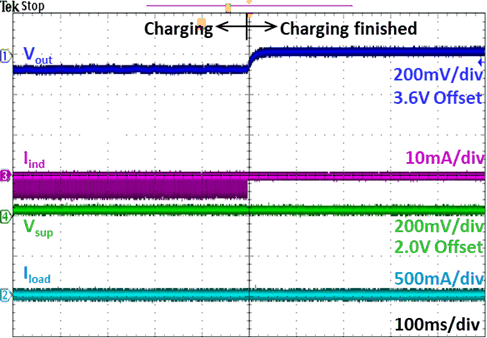SLVAF41A March 2021 – November 2021 TPS61094
6.1.2 Supercap Charging
Figure 6-4 shows the performance of the supercap from charging to full charge (phase 2 to phase3). During supercap charging phase, the TPS61094 can control the charging current to the set current. Because the resistor Rin(between LiSOCl2 battery and TPS61094 VIN pin), there is about 55 mV voltage drop in the TPS61094 output. When the supercap voltage reaches the set terminal voltage, the TPS61094 stops charging.
 Figure 6-4 The Performance of the Supercap from
Charging to Charging Finished
Figure 6-4 The Performance of the Supercap from
Charging to Charging Finished